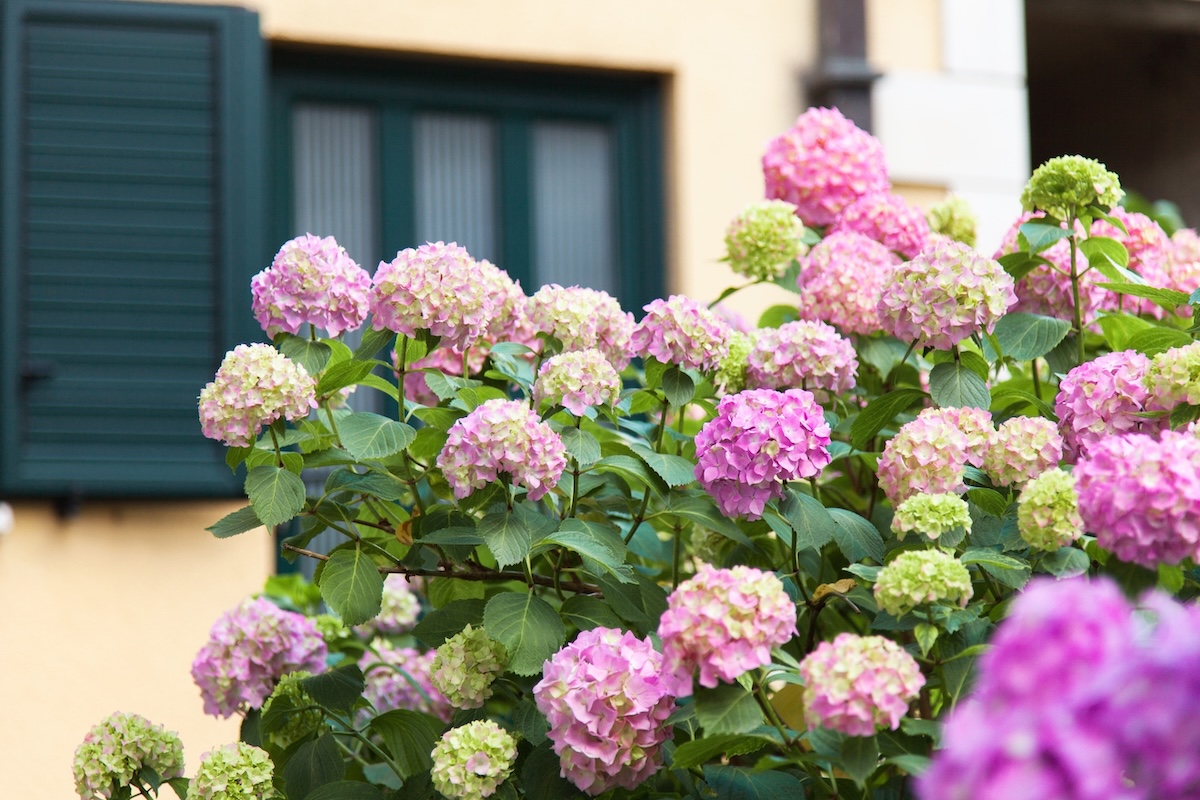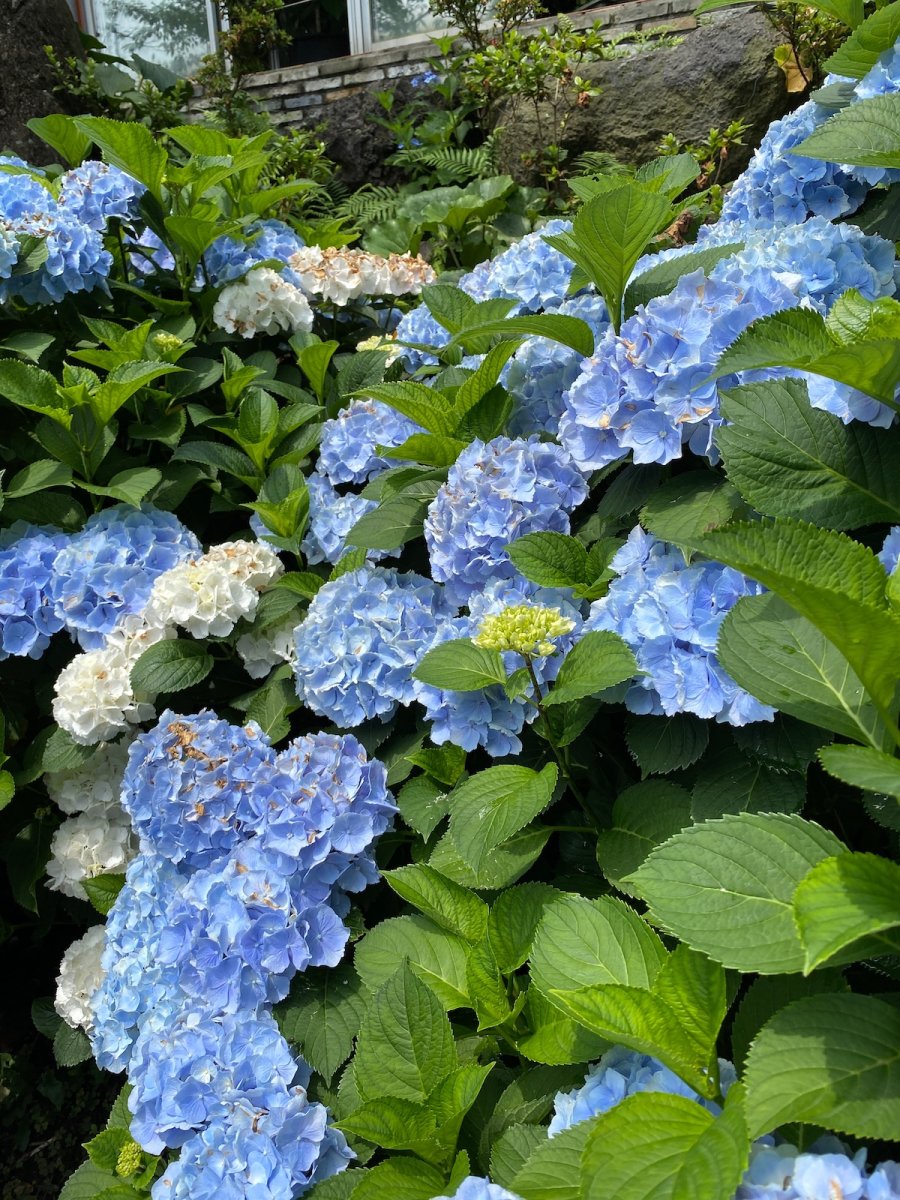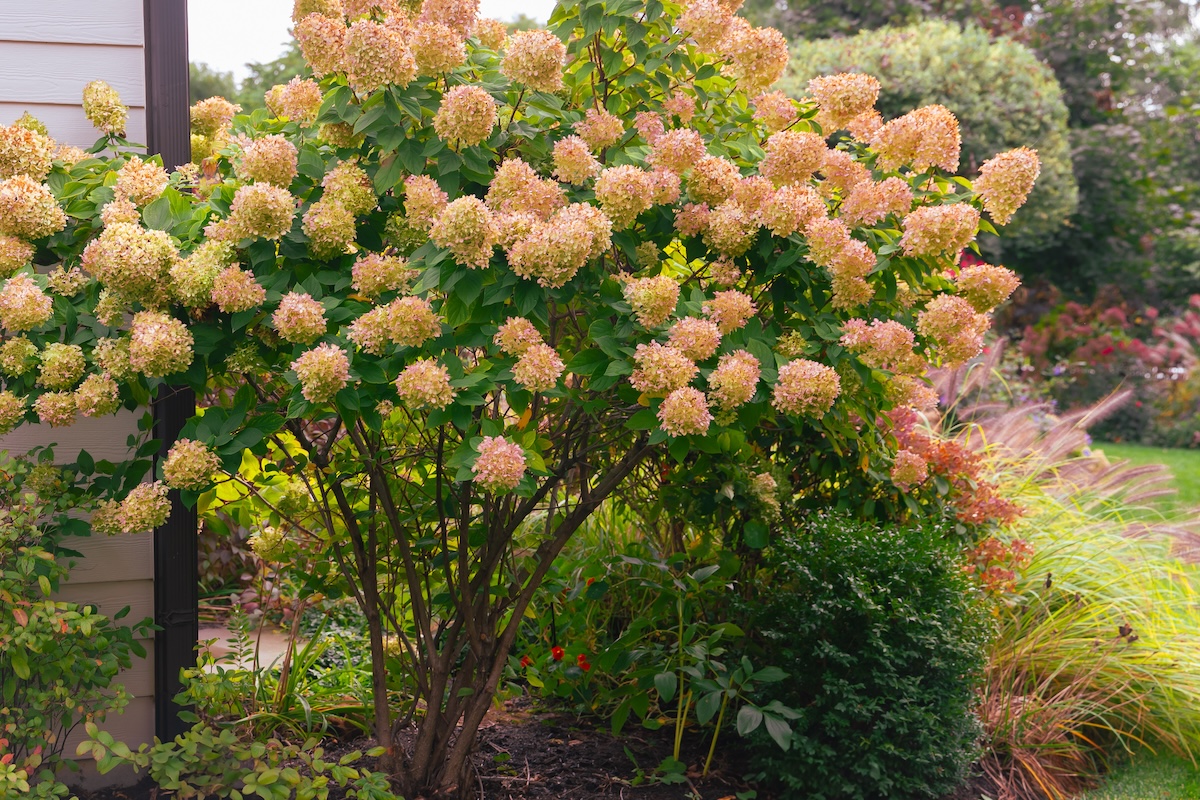

We may earn revenue from the products available on this page and participate in affiliate programs. Learn More ›
When my husband and I bought a 150-year-old farmhouse, the first thing we did was revive its functionality for today’s high-tech lifestyle. The second thing we did was to restore its beauty through painting and landscaping. Because hydrangeas are historic plants, dating back to dinosaur days, and because they produce large, beautiful blooms, they seemed appropriate to decorate a sesquicentennial home.
Unfortunately, I didn’t take seriously the labels on the 1-gallon pots advising me of full-grown hydrangea size and proper spacing when planting. As a result, the mature flowering plants are now too close to the house, blocking windows. Severe trimmings must wait for the right time of year so as not to reduce next year’s blooms.
Types of Hydrangeas
There are about 80 species of hydrangeas worldwide, the most common in this country being lacecap, oakleaf, panicle, climbing, smooth, and bigleaf or French. They’re all deciduous, woody-stemmed, fast-growing plants that produce show-stopping blooms, but some are better suited for different USDA Plant Hardiness Zones or have other specific requirements, such as soil pH to produce a desired color.
Most grow 3 to 5 feet, but some varieties can grow up to 50 feet tall. Expect a spread in a range equal to their height. Pay attention to that so you don’t plant them too close to buildings like I did.

Hydrangea Care
Panicle hydrangeas are the lowest-maintenance variety, but most require minimal care: moist, well-draining, slightly acidic soil; full to partial sun (depending on the variety); and plentiful water—but not enough to produce soggy soil. Mulching helps. Fertilizer should be applied only in the spring.
Pruning is the most confusing care aspect. The best rule of thumb is to prune immediately after flowering if they bloom on old wood. Late-season pruning leaves them vulnerable to harsh winter conditions and can eliminate the next year’s blooms. Those that bloom on new wood should be pruned in early spring after new buds appear.
Tips for Planting
For health and maximum blooms, select the right location: correct Hardiness Zone, proper soil type and conditions, adequate light. Don’t forget to read the labels regarding mature size.
The best time to plant is in fall; the second-best time is in spring.
- Dig a hole 2 feet wider than the root ball and as deep as the root ball to encourage drainage.
- Loosen the roots after removing the plant from its pot.
- Place the rootball in the hole.
- Fill the hole halfway with soil. Add compost to help retain moisture and regulate soil temperature.
- Water.
- Finish filling the hole with soil.
- Mulch.

Transplanting Mature Hydrangeas
If they’re too big for their space or they’re getting less than 4 hours of daily light, mature hydrangeas can be successfully transplanted. It’s best done in the fall, when temperatures are cool but the ground hasn’t frozen. Move a dormant plant before the first frost to give it time to develop roots.
Adjust the usual steps for planting by gently pruning the plant first. Then, dig the new hole twice the width and the same depth as the root ball before carefully digging up the plant, keeping as much of the root ball intact as possible. Add mulch. Water.
Container Growing
To avoid the too-close-to-the-house issue, try container gardening. Several dwarf and low-growing hydrangea varieties do well in containers. Be sure to select a hardy cultivar and a frost-proof container. Because they can be heavy, either put it on a plant caddy with casters to move it or find the appropriate permanent spot for it.
Potted hydrangeas need the same basic care as their larger counterparts, but may need additional watering in the summer, as well as protection from cold winters, either by bringing it into an unheated garage or by surrounding the pot with insulation (such as straw bales).
